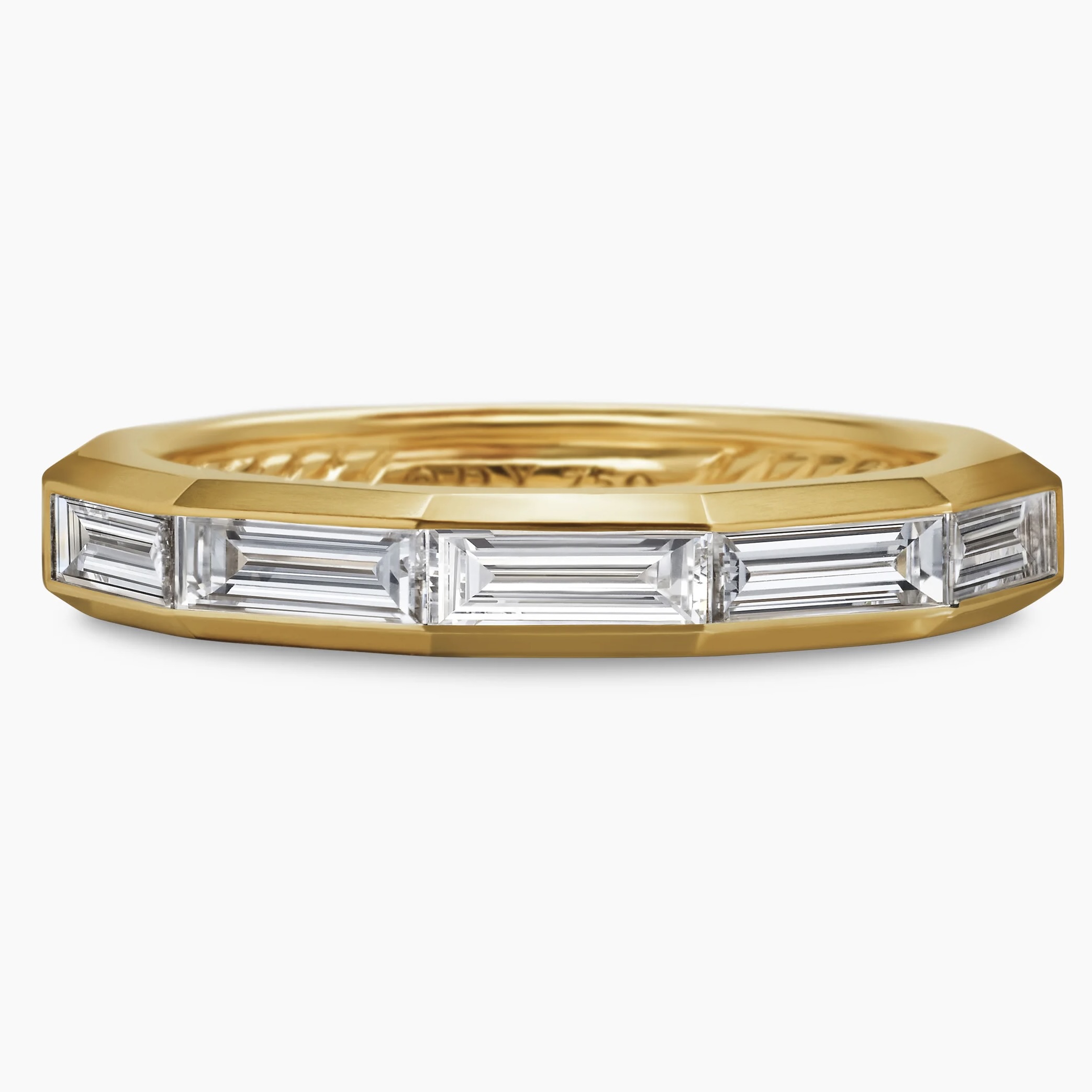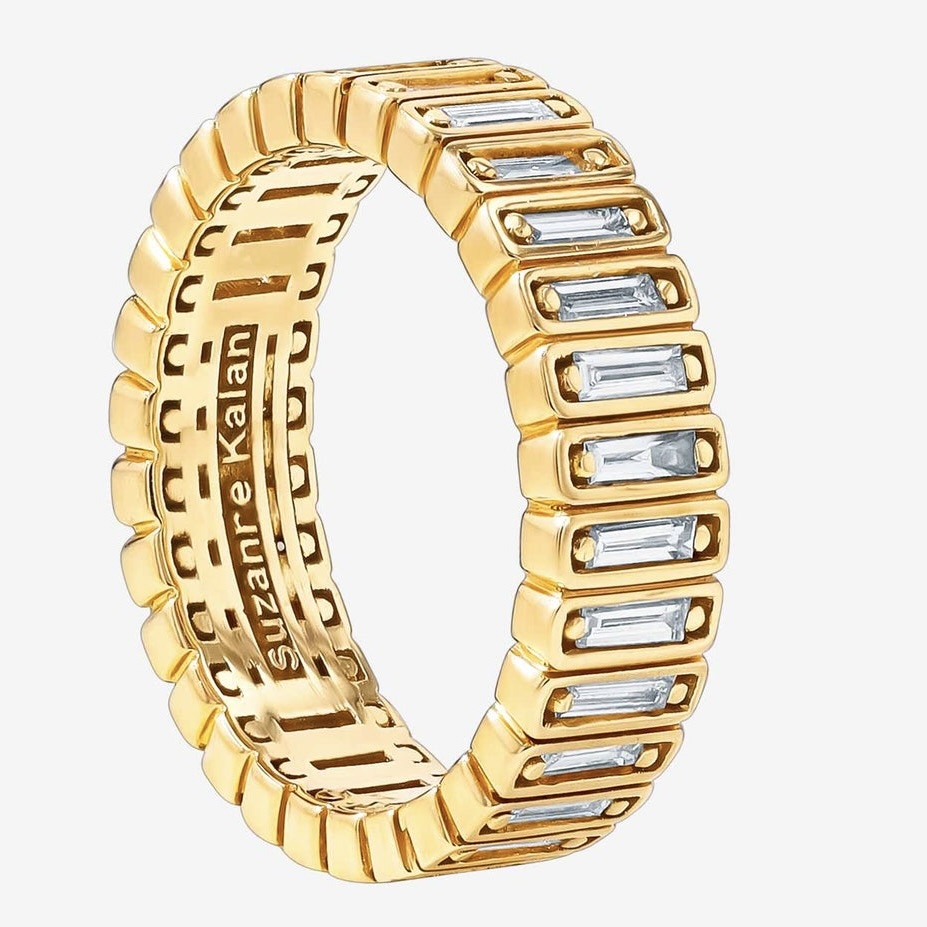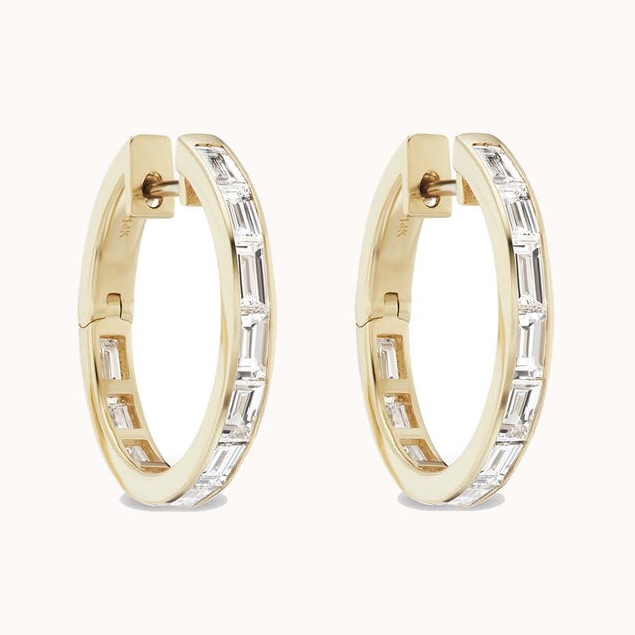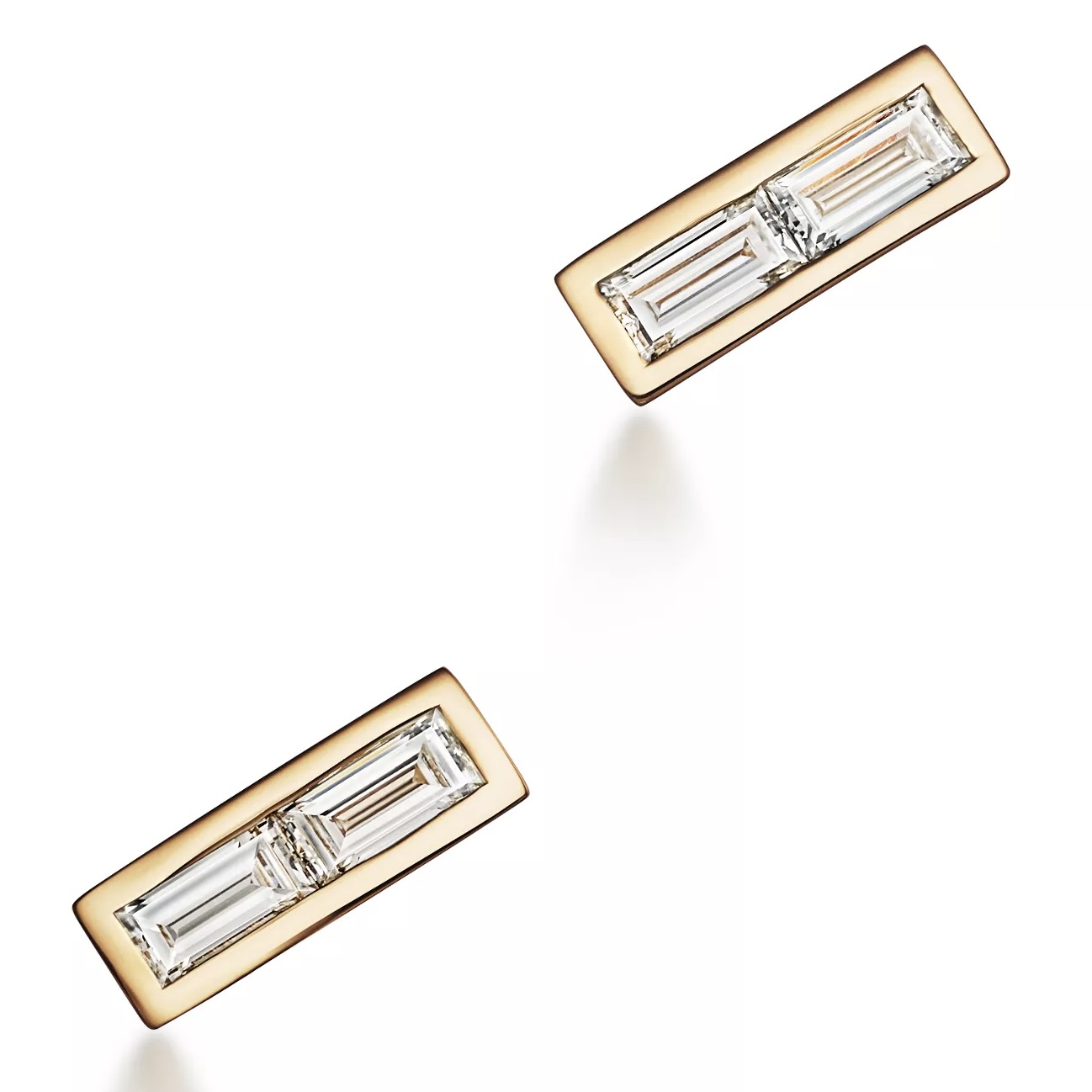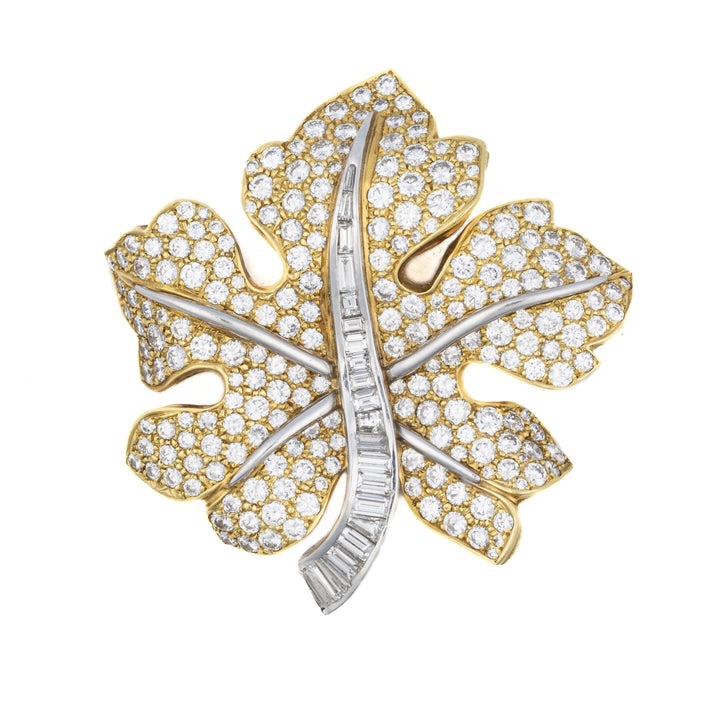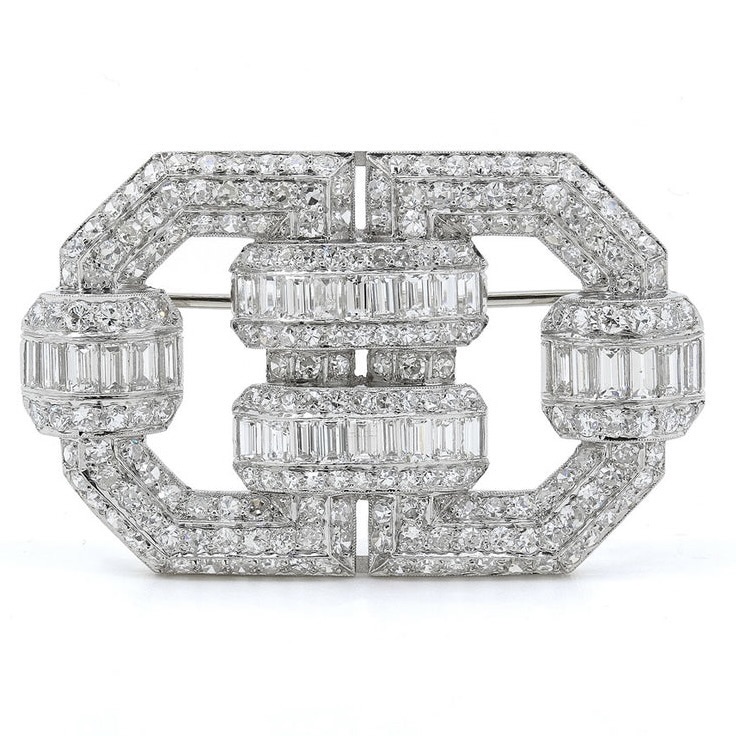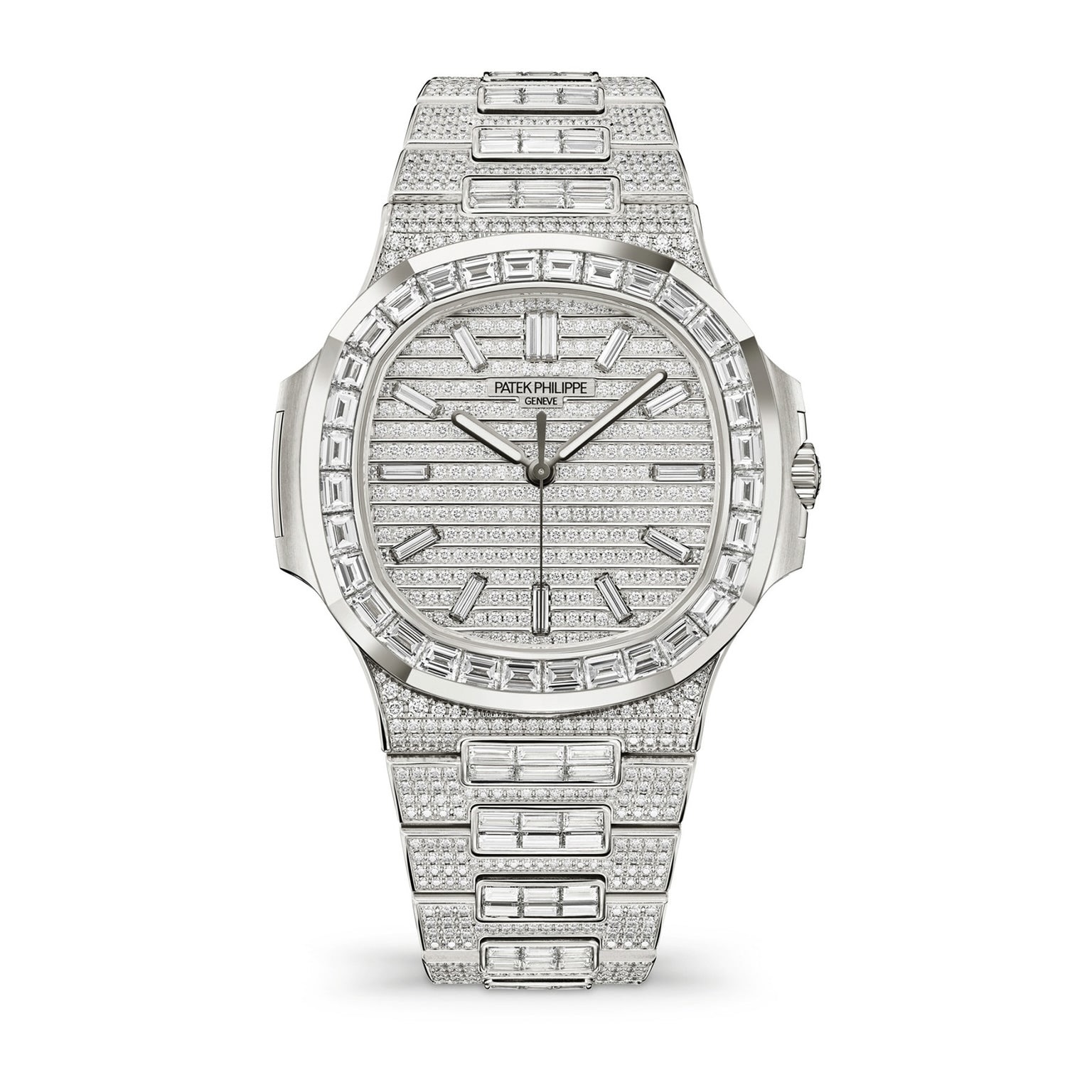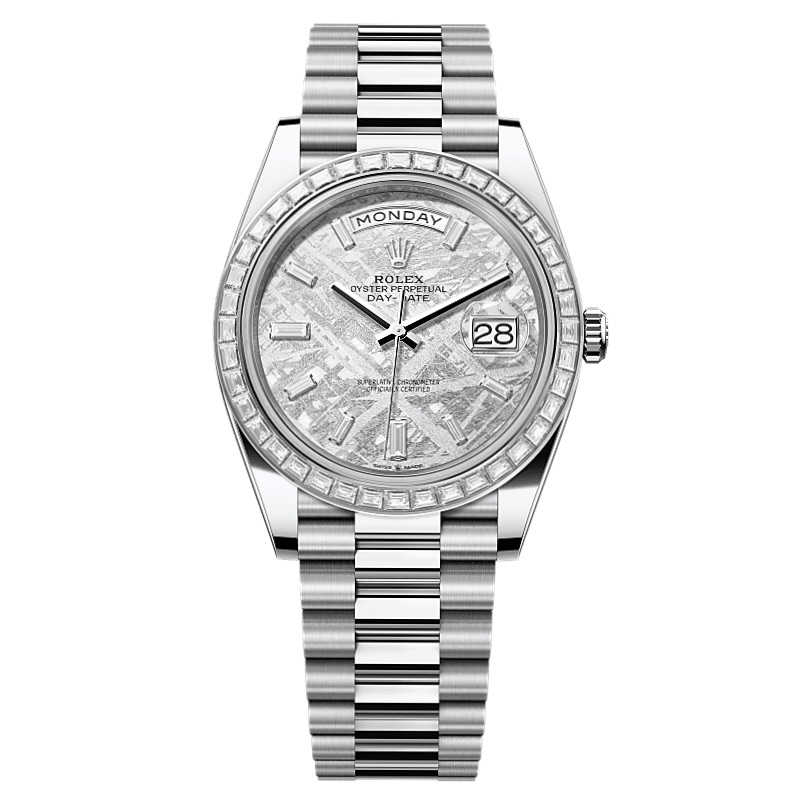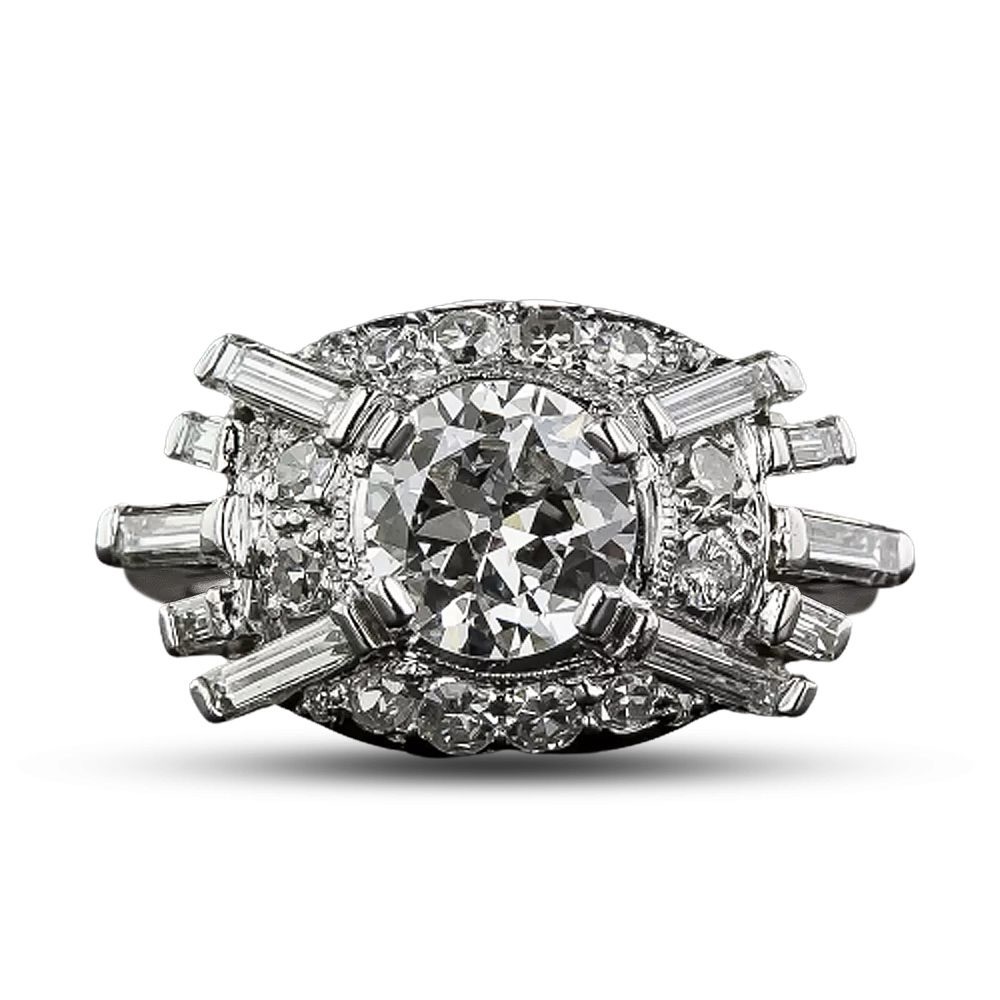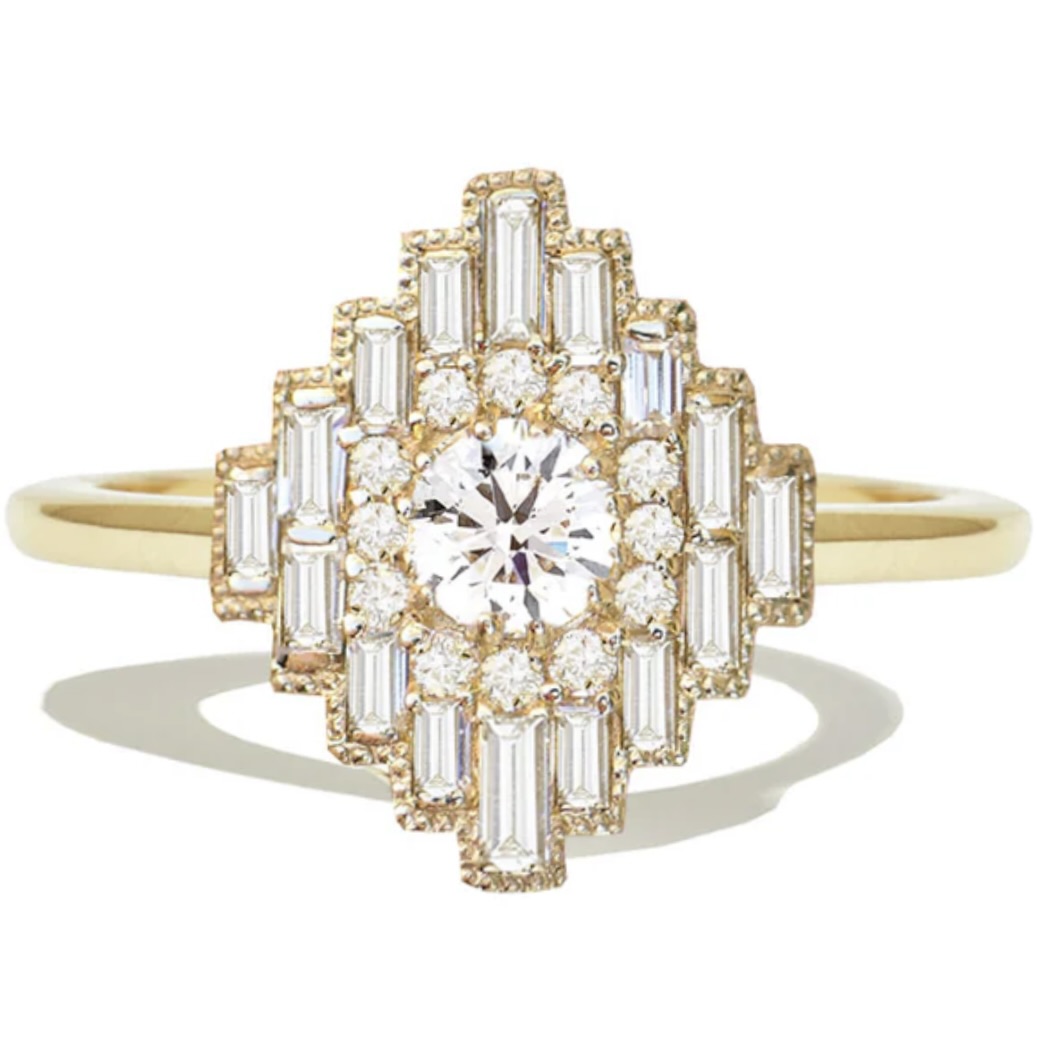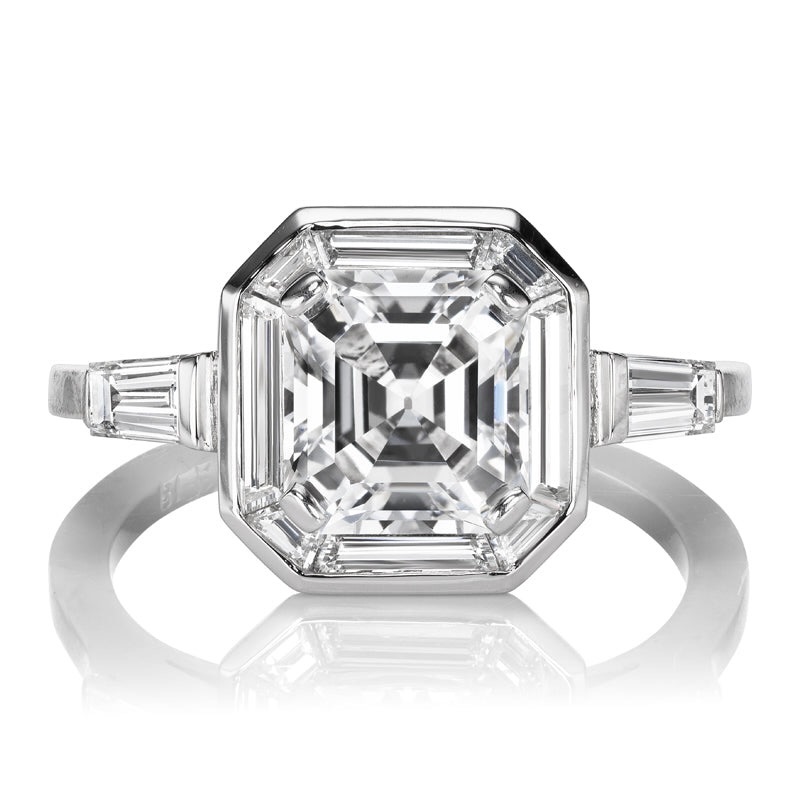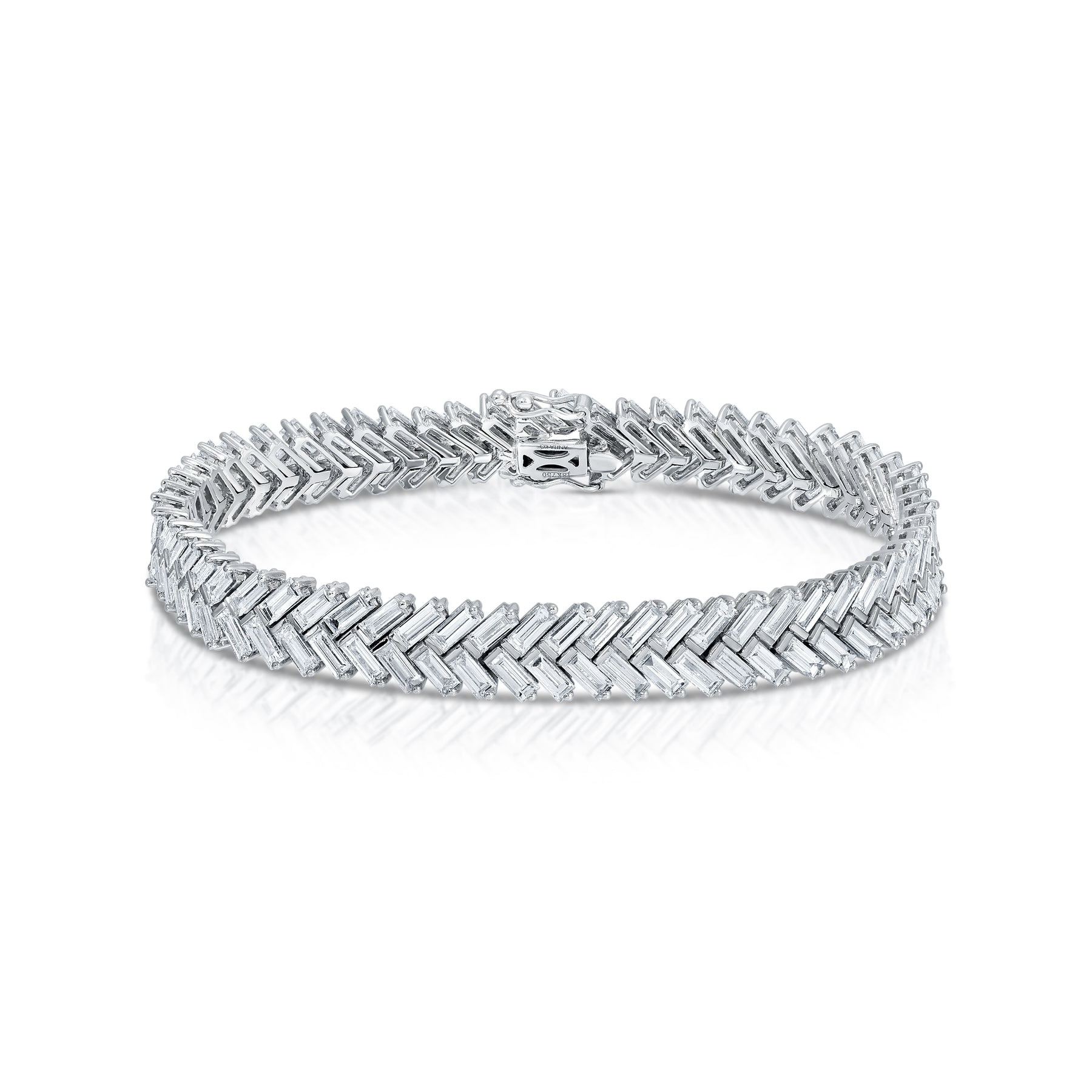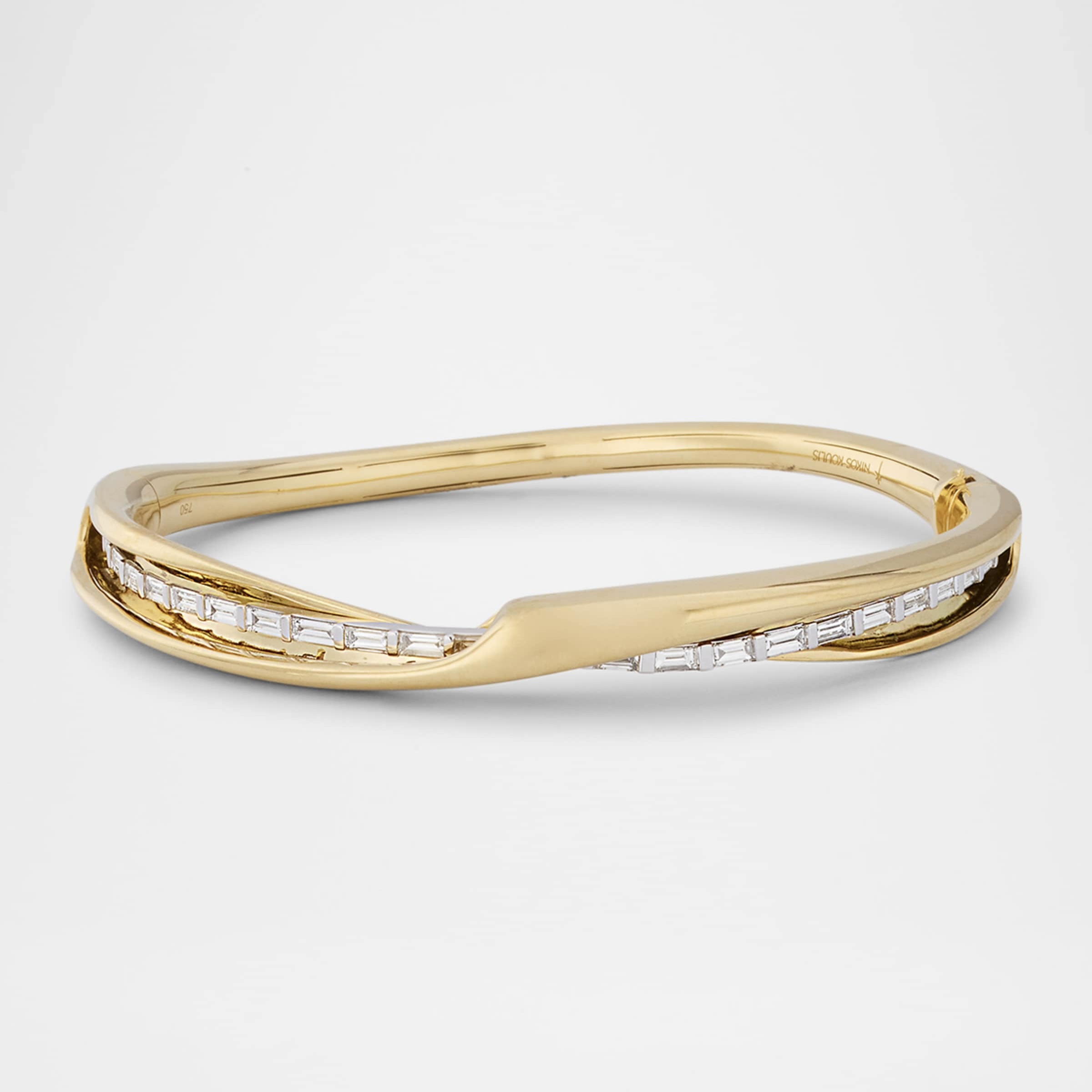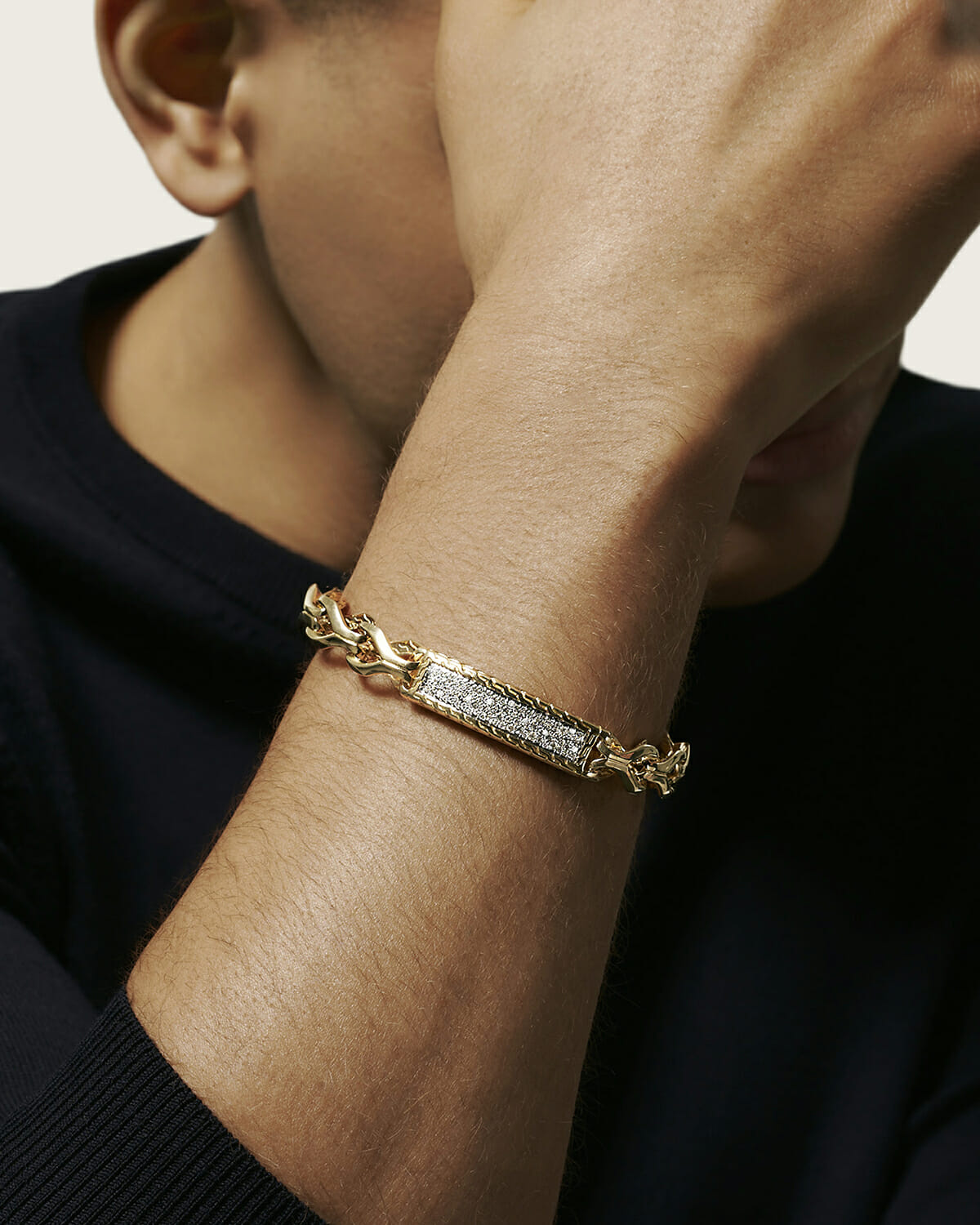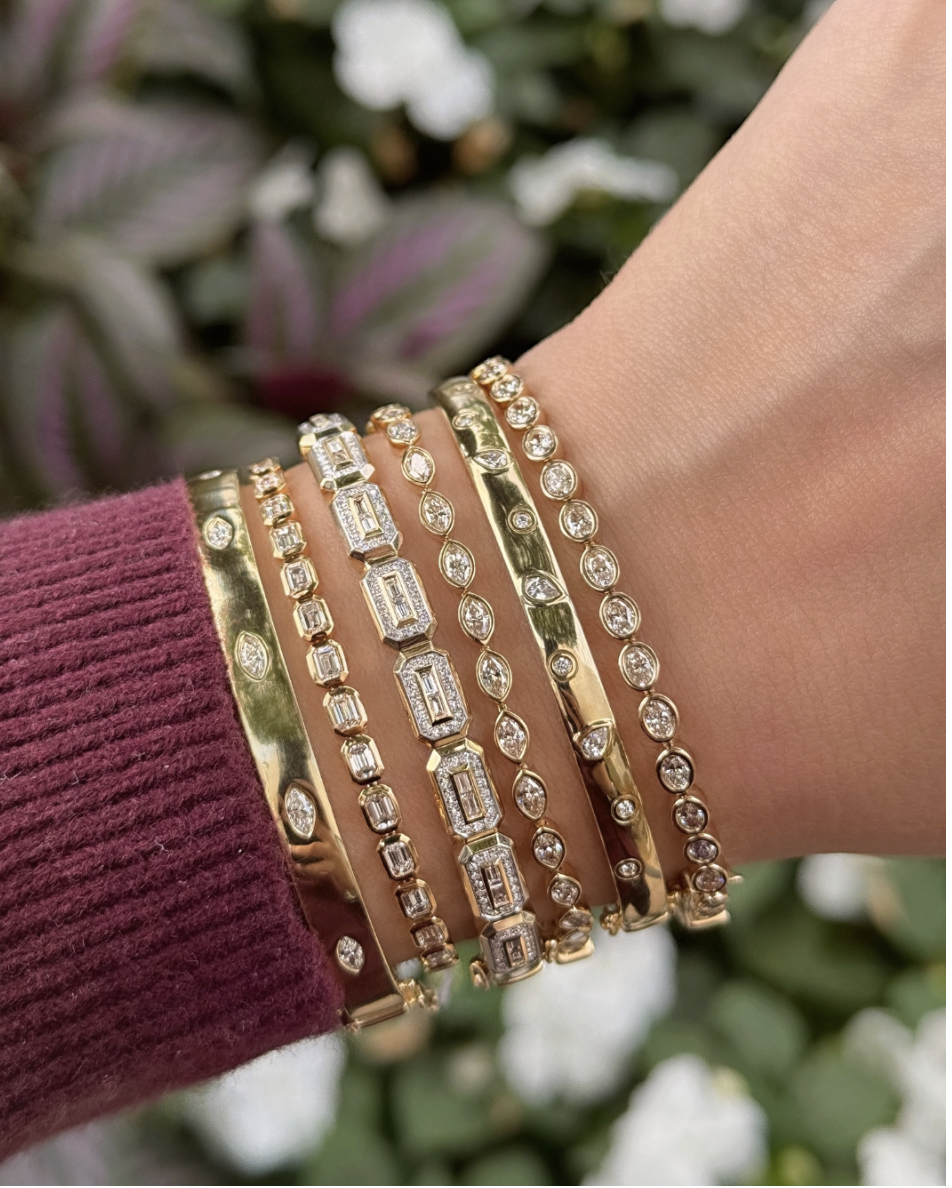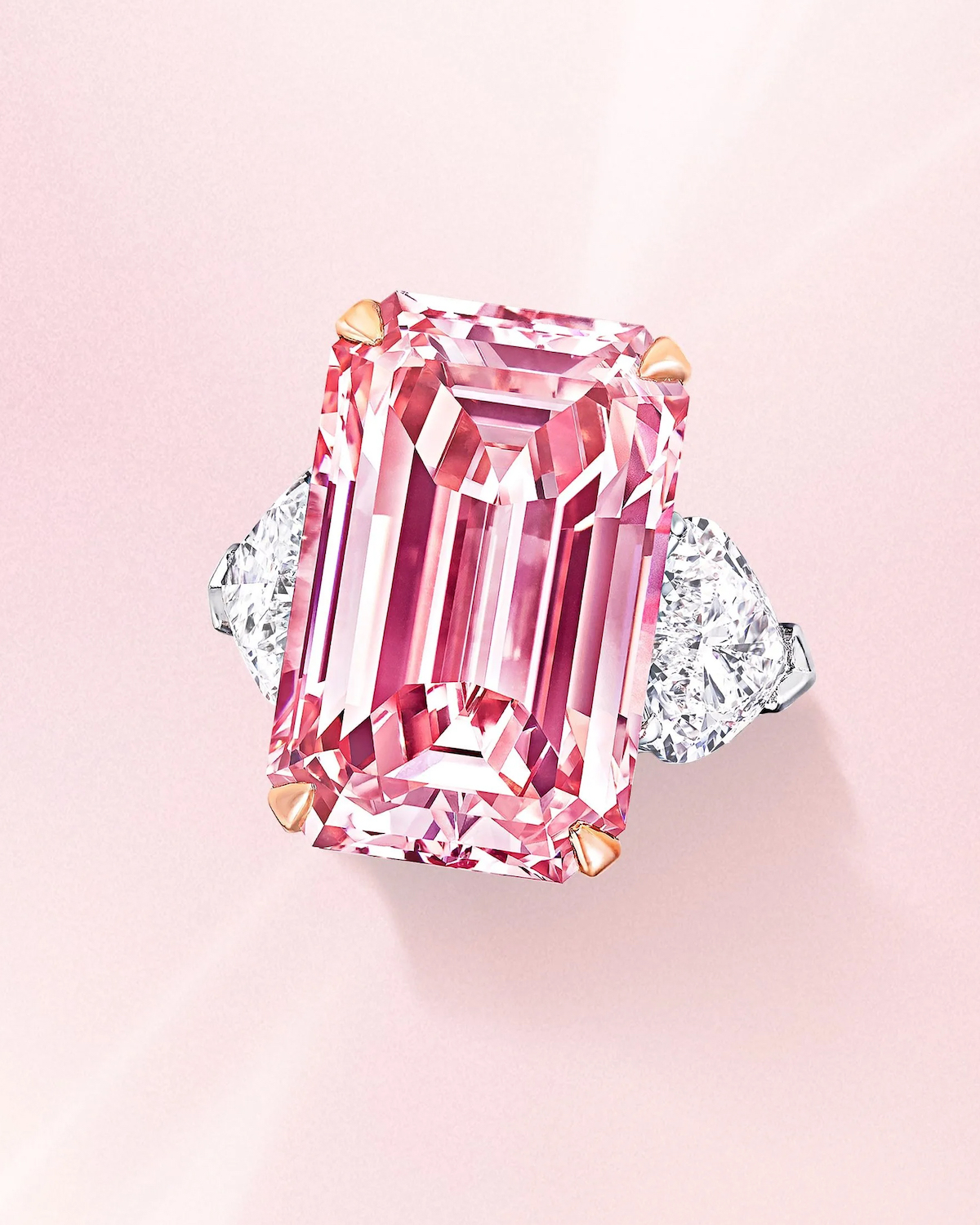< Engagement Rings & Weddings / Guides
The Baguette-Cut Diamond: A Brilliant Slice of History
From 16th-century monograms to Art Deco masterpieces, the baguette diamond’s refined geometry has made it a quiet icon of elegance and craftsmanship for centuries.
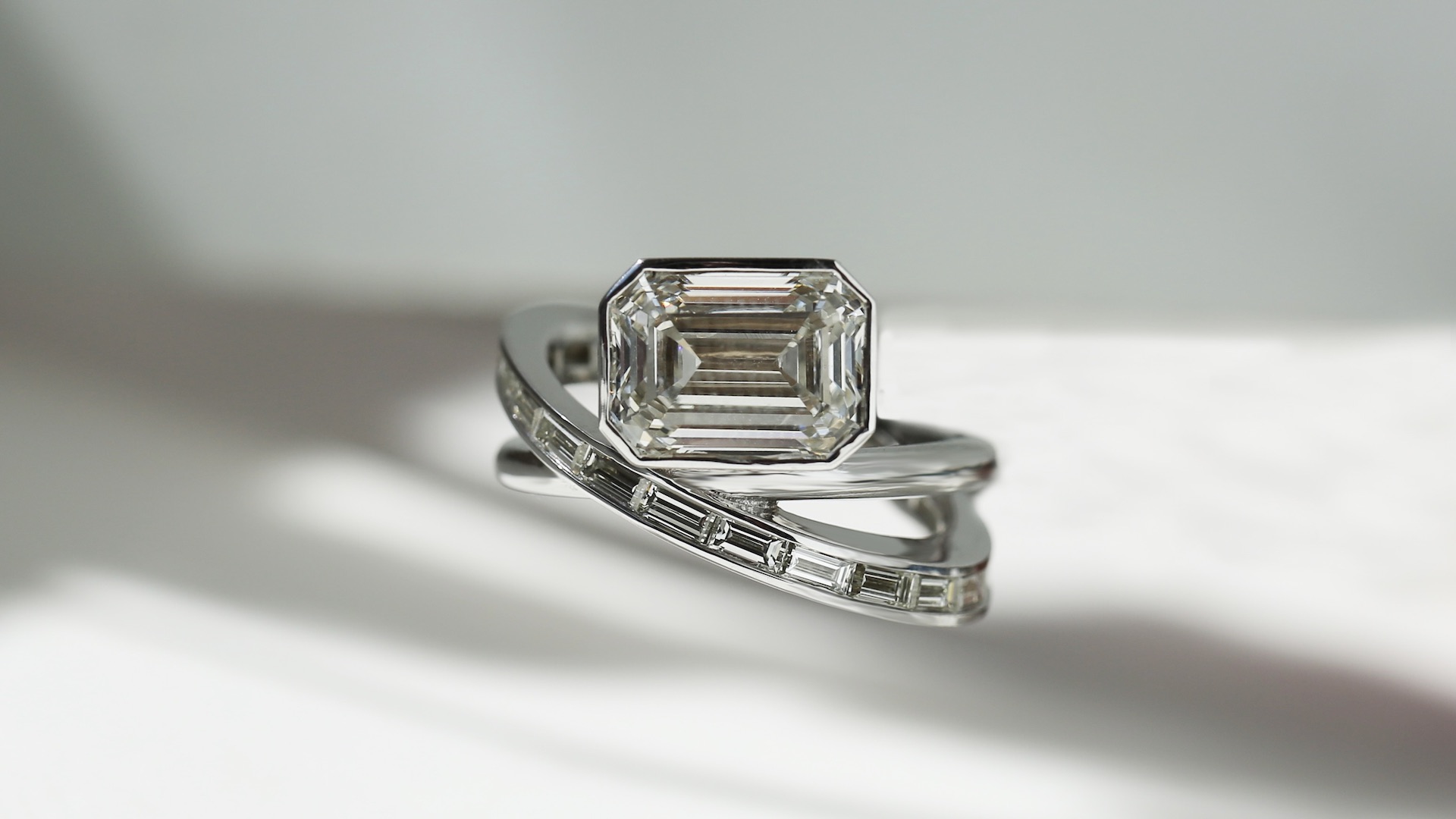
Grace Lee Baguette Helix Crossover Setting with an Emerald Cut Diamond (Courtesy of Grace Lee)
The baguette-cut diamond oozes quiet elegance. With its clean lines, elongated rectangular shape, and mirror-like facets, the baguette has been a mainstay in fine jewelry for centuries, both as a sophisticated accent and, at times, as a striking centerpiece. Its enduring appeal lies in its simplicity, symmetry, and versatility, traits that have made it a favorite of jewelry designers from the 16th century to today.
Meet the Expert

- Grant Mobley is the Jewelry & Watch Editor of Only Natural Diamonds.
- He is a GIA Graduate Diamonds Graduate.
- He has over 17 years of jewelry industry experience, starting with growing up in his family’s retail jewelry stores.
The Baguette Diamond Is a Cut Rooted in History
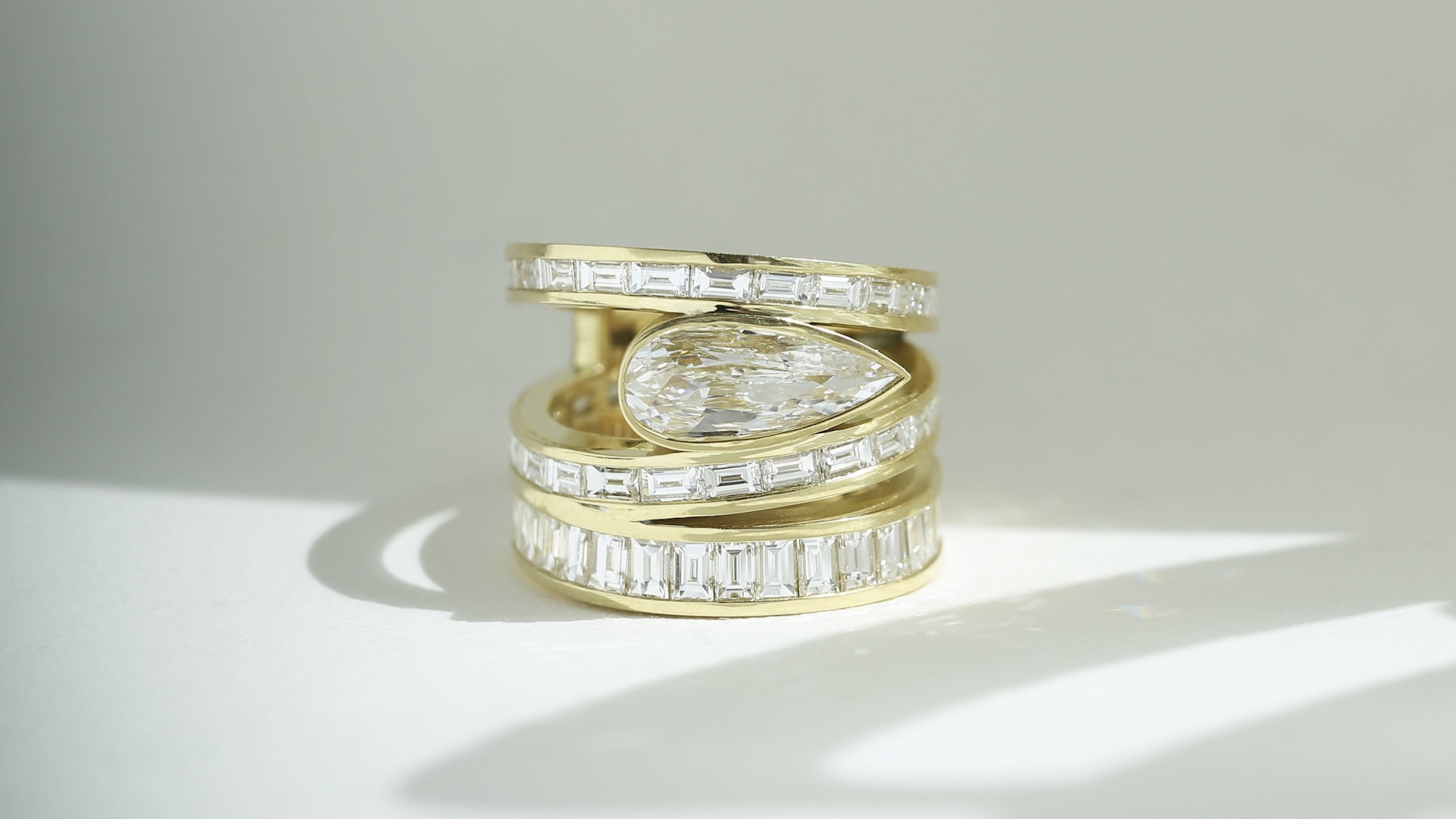
While it’s difficult to pinpoint precisely when and where the baguette cut originated, France has long claimed a connection to it. By 1673, the French already used the word baguette to mean “little jewel,” a term derived from bague, which means “jewel.” It’s fitting, then, that this small yet elegant cut carries a French name synonymous with refinement.
But the baguette’s story begins even earlier. Its predecessor, the hogback cut, dates back to the 1500s. This early diamond shape featured an elongated form with a raised top. It was particularly fashionable among the European nobility. Jewelers of the period often used these slim stones to create monograms or initials, which served as status symbols among the wealthy.
As diamond cutting evolved, lapidaries began flattening the pointed top of the hogback, giving birth to a shape with a large table facet and a geometric outline. This transformation marked the birth of what we now recognize as the baguette cut.
The Baguette Diamond Is Where Function Meets Beauty
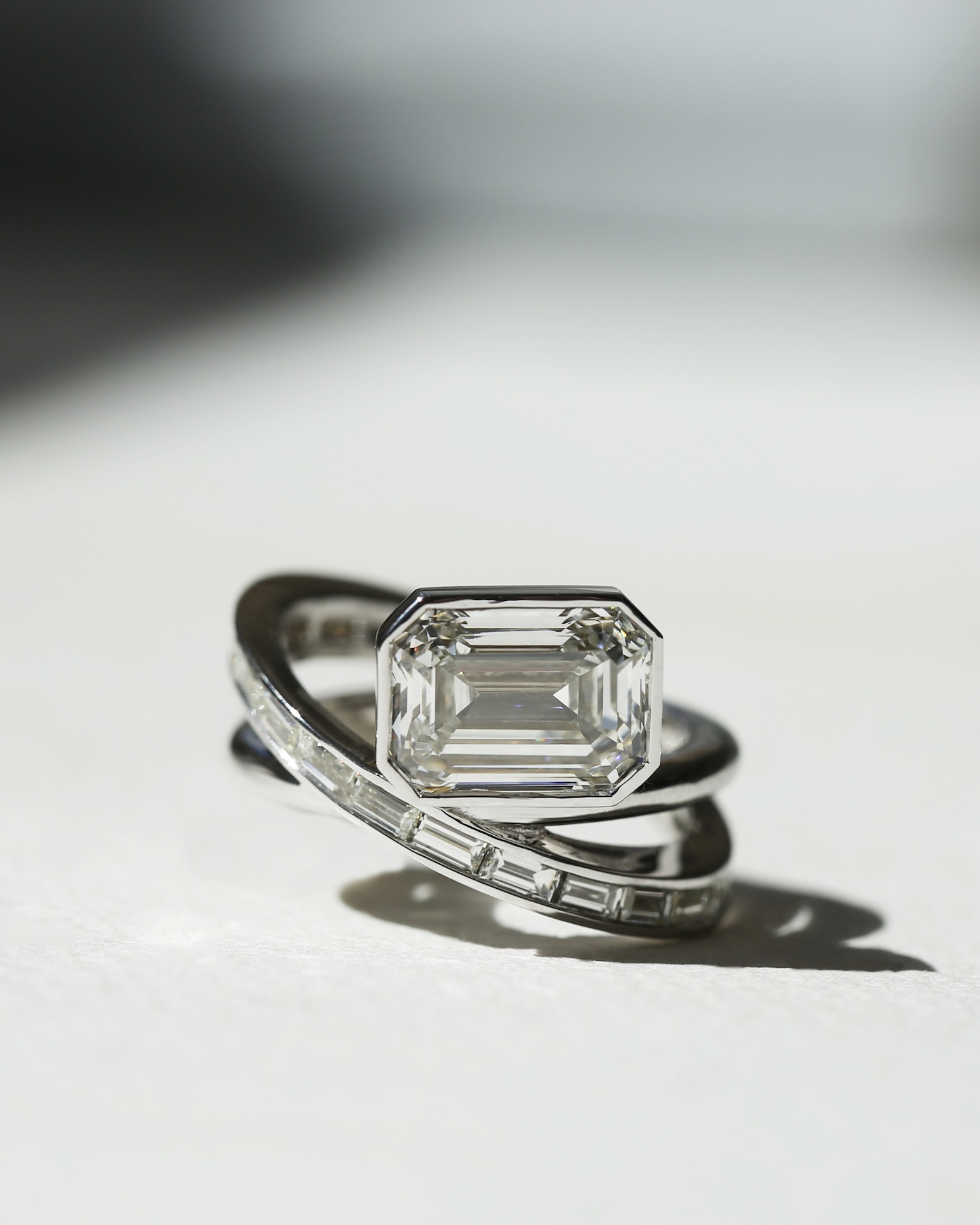
In the centuries before modern cutting technology, diamond cutters faced significant challenges. The intricate brilliant cuts we know today were impossible to achieve with the tools of the time. Instead, jewelers favored step cuts like the baguette diamond because they offered both practicality and beauty.
The baguette cut is an elongated step cut, typically rectangular, with 14 to 24 parallel facets that run along the stone’s sides. These facets are broad and linear rather than triangular, producing a sophisticated, reflective shimmer rather than a fiery sparkle. The brilliance of a baguette diamond lies in its glass-like gleam, which highlights clarity and polish rather than internal scintillation.
Because of its flat surfaces and minimal facets, the baguette cut requires exceptional precision. Any imperfection or misalignment becomes immediately visible. When set together, such as in eternity bands or line bracelets, each baguette must be cut and aligned with exacting care to ensure perfect symmetry.
Jewelers often set these slim stones in channels to protect their vulnerable corners, a technique that also enhances the clean, continuous flow of light across the piece.
Straight vs. Tapered Baguettes
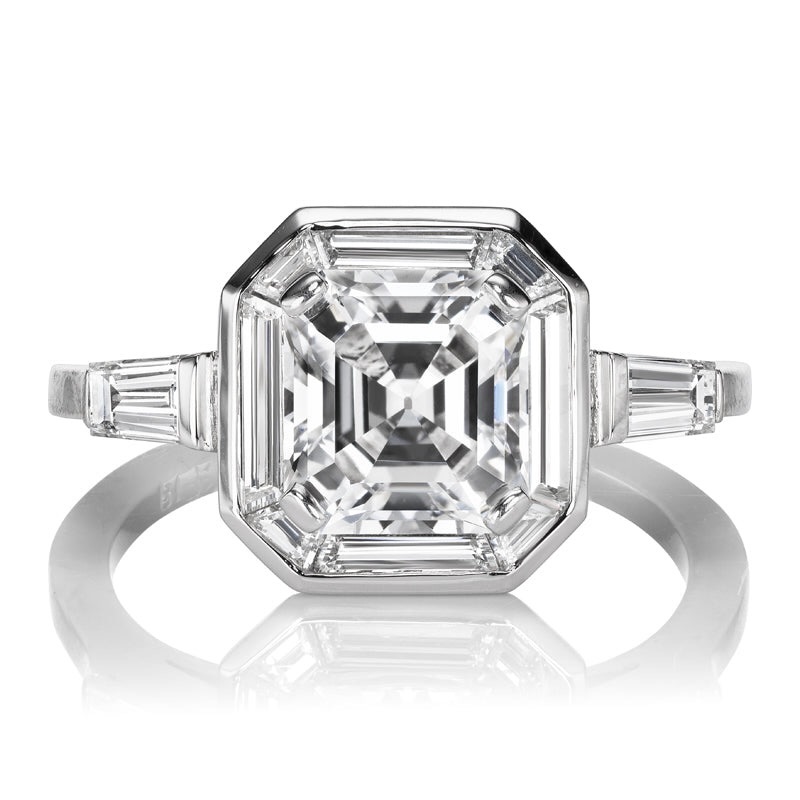
There are two primary types of baguette-cut diamonds: straight and tapered. Designers often use straight baguettes with perfectly parallel sides in eternity bands, tennis bracelets, and other creations that emphasize continuity and symmetry. Their uniform shape creates a seamless rhythm when set in rows.
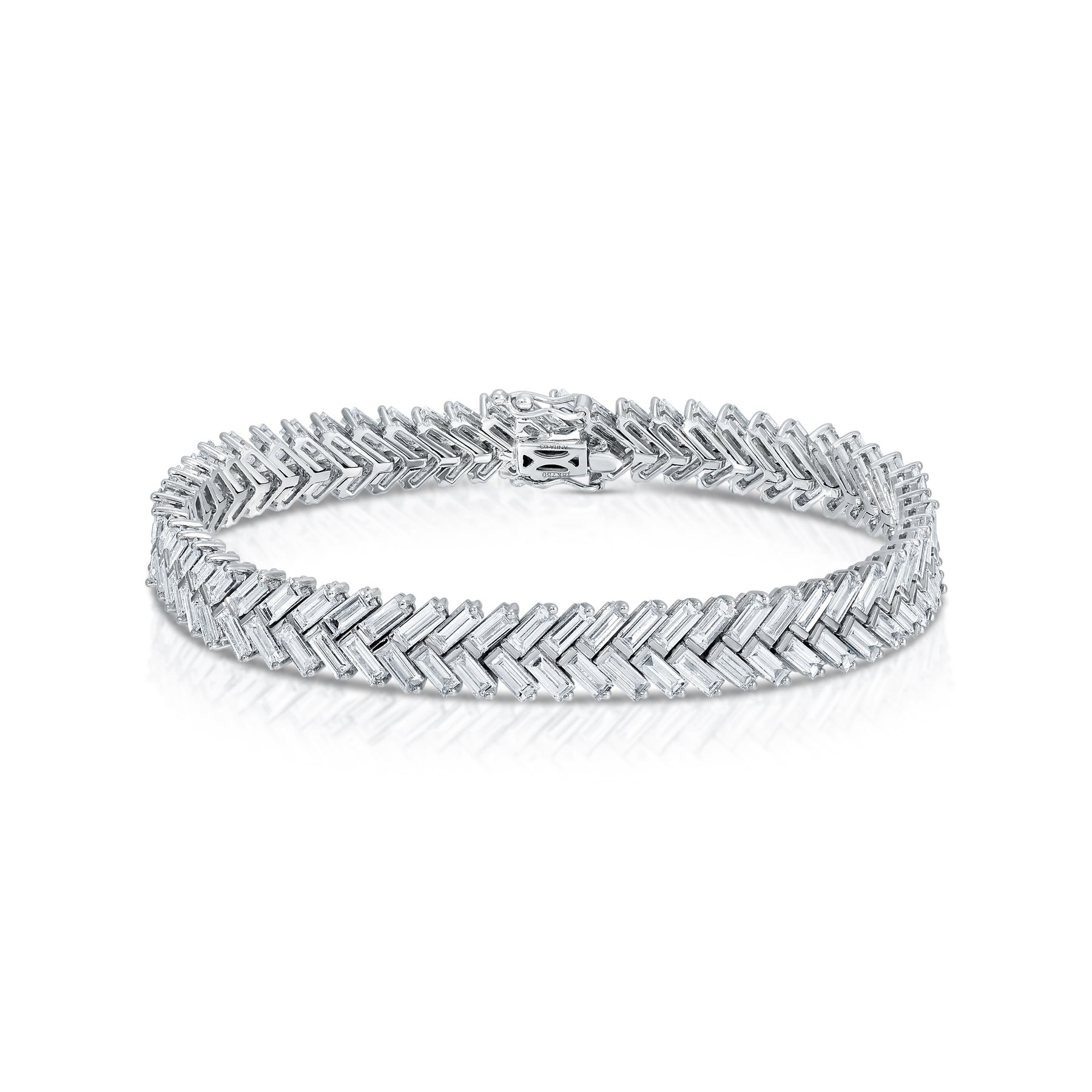
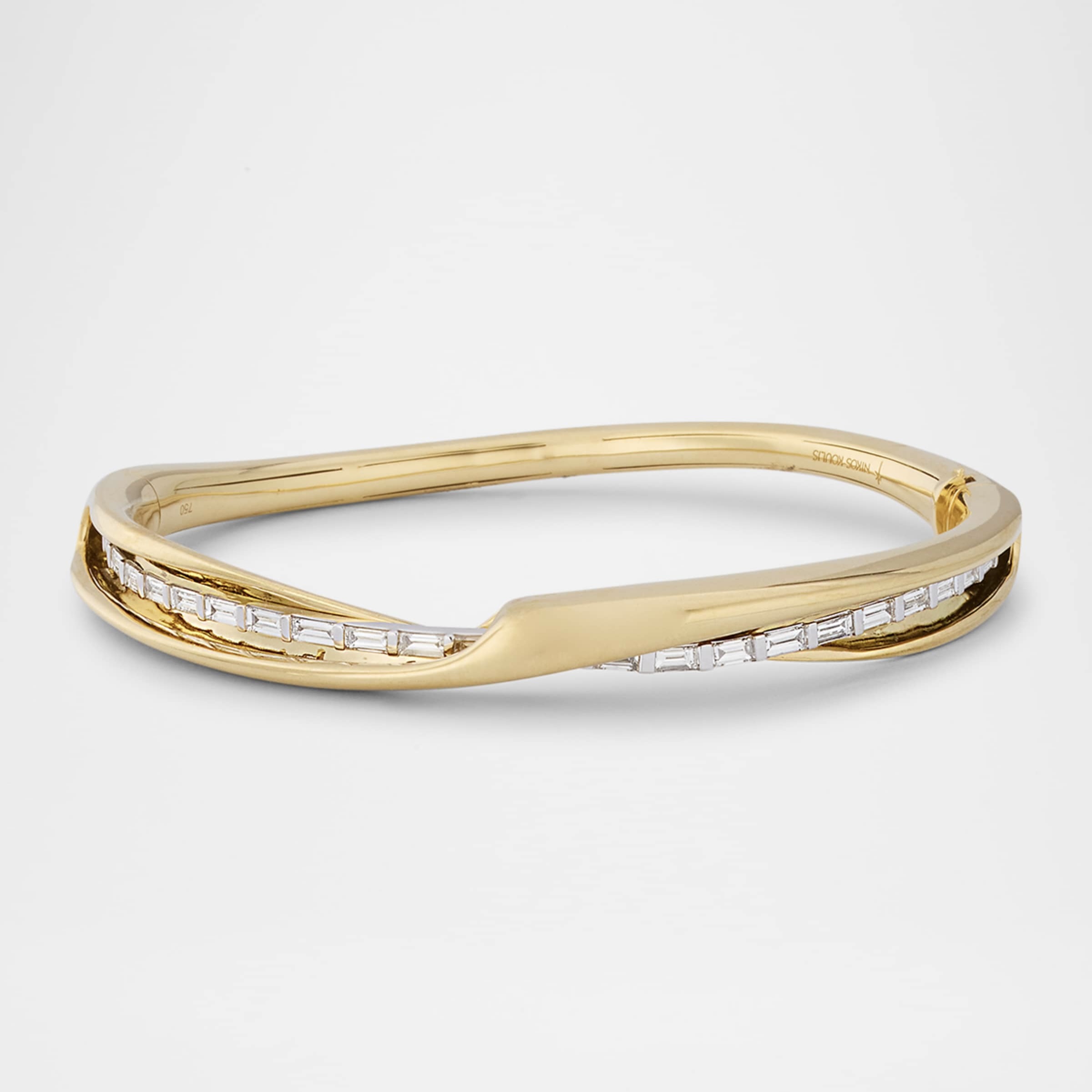
Tapered baguettes, on the other hand, narrow slightly toward one end, forming a trapezoidal silhouette. This makes them ideal as side stones in engagement rings, where they create a graceful transition between the band and a larger center stone.
Both variations highlight the baguette’s signature clarity and elegance while serving distinct design purposes.
The Baguette Diamond and Its Cousins
Though similar in concept to the emerald cut, the baguette has fewer facets and a lower crown, resulting in a simpler, sleeker look. Emerald cuts typically have 57 or 58 facets and exhibit more internal brilliance, while baguettes prioritize form, proportion, and light reflection.
In fact, the baguette can be considered the ancestor of the emerald cut. Both belong to the family of step cuts, characterized by rectangular facets arranged in a staircase, but the baguette’s slender proportions and fewer steps give it a distinct character. Its shape also makes it ideal for maximizing yield from elongated diamond crystals, minimizing waste during cutting.
The Art Deco Revival

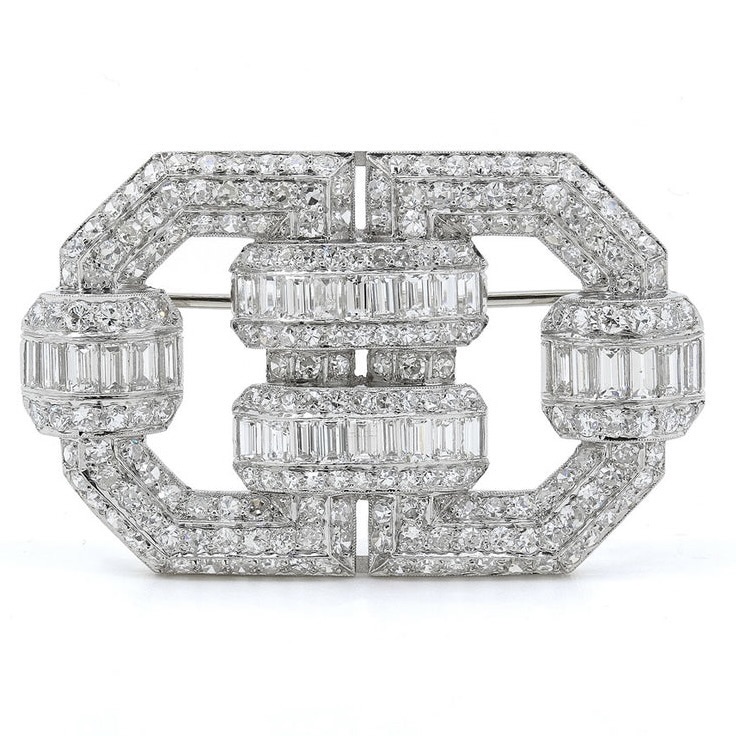
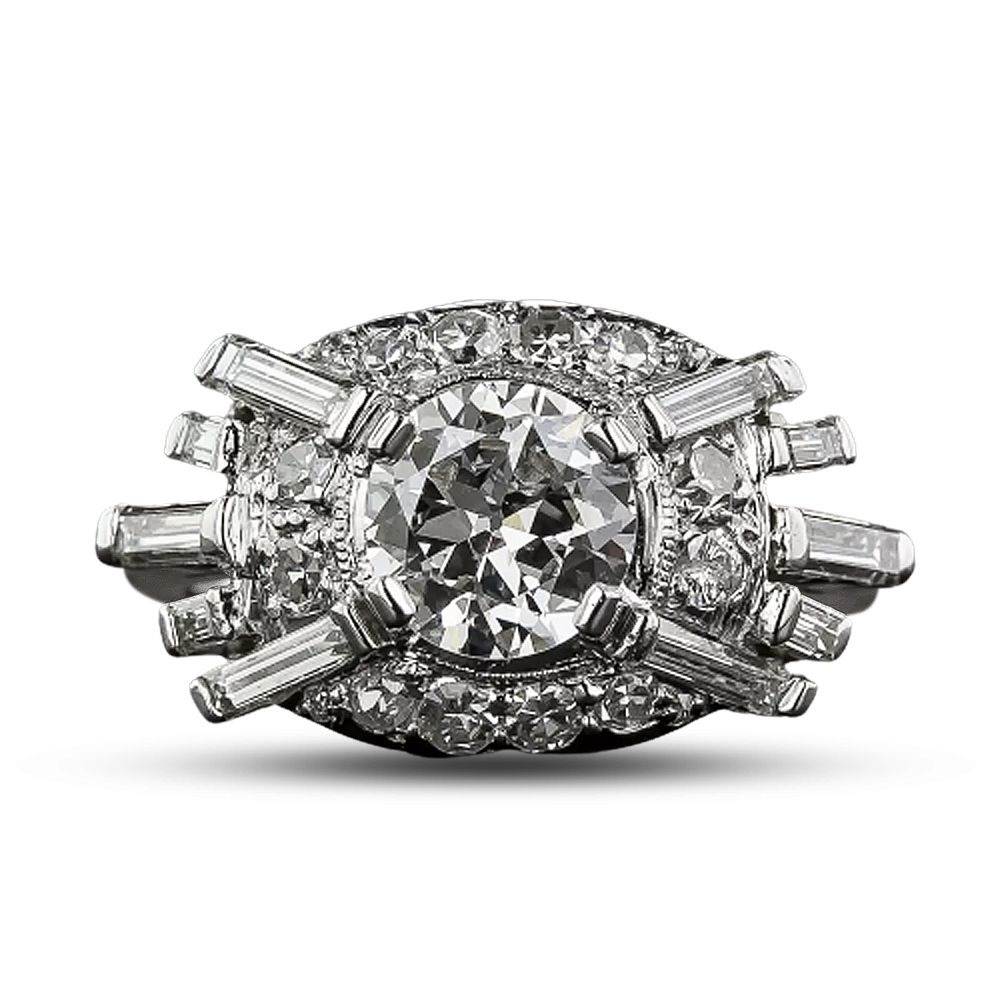
The baguette cut enjoyed a major boom in the early 20th century, particularly during the Art Deco era. The period’s obsession with symmetry, geometry, and architectural design made the baguette a perfect match. Jewelers such as Cartier, Van Cleef & Arpels, and Tiffany & Co. embraced the baguette as both a structural and decorative element, framing bold center stones or forming striking linear motifs.
The baguette diamond became a hallmark of engagement rings, watches, and brooches during this era, adding streamlined sophistication to otherwise elaborate designs. Even today, the cut retains its Art Deco aura: timeless, sleek, and effortlessly chic.
A Modern Classic
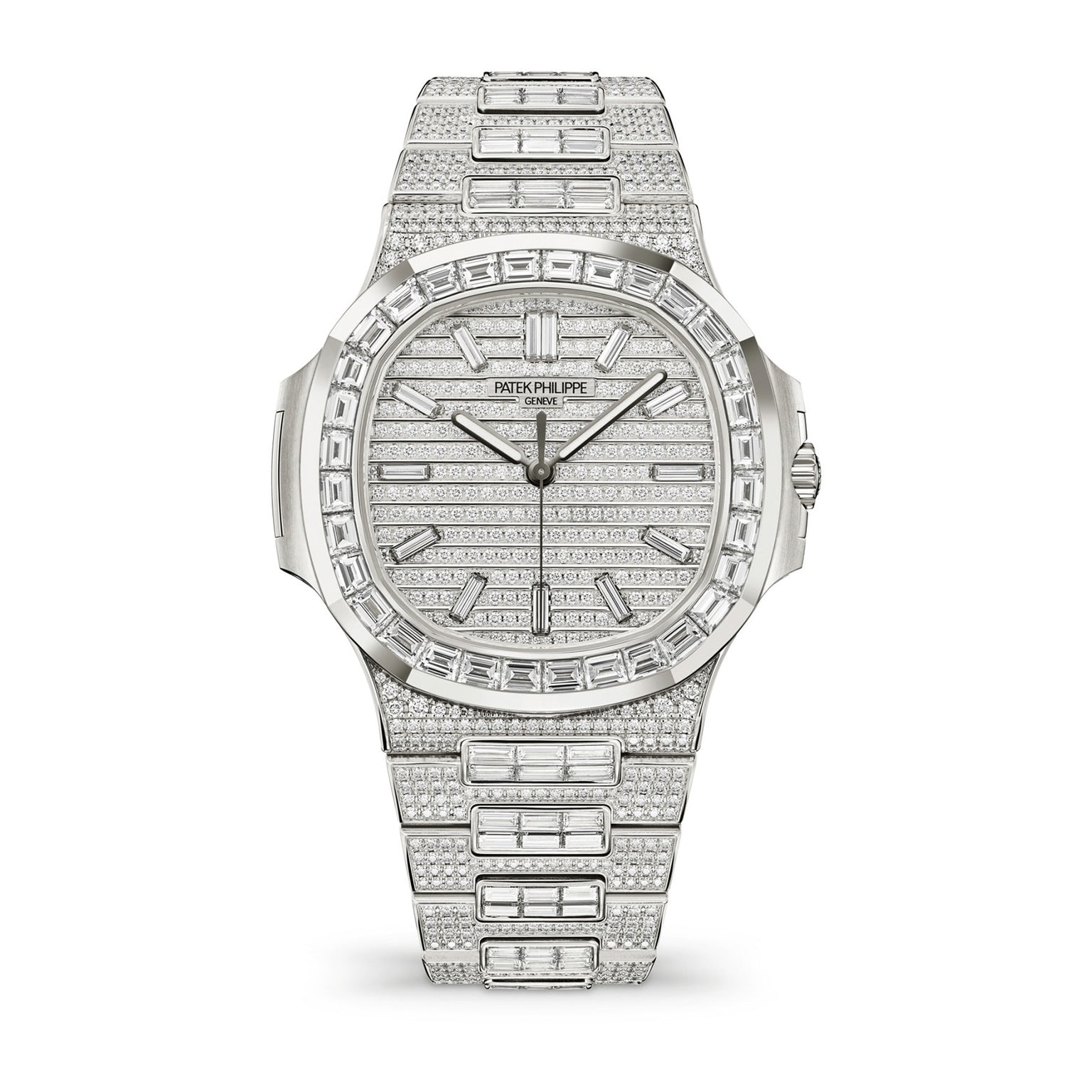
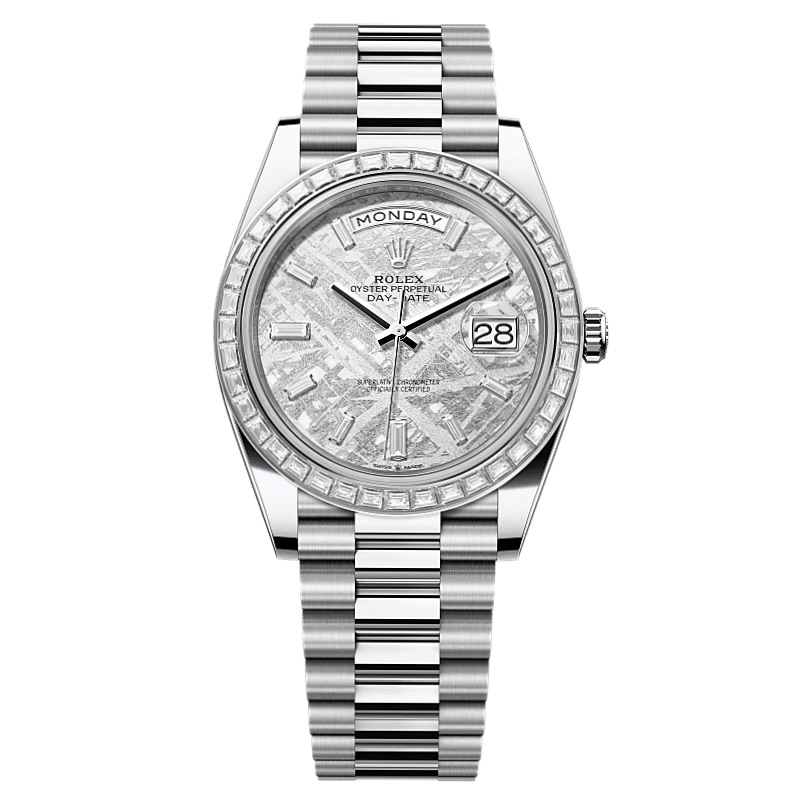
In contemporary jewelry, baguette diamonds continue to play a significant role. Designers favor them for their ability to complement any shape or style, from minimalist engagement rings to intricate vintage-inspired settings. Although designers usually use baguettes as side or accent stones, they sometimes let large baguettes take center stage in one-of-a-kind creations, where their elongated profiles lend a modern, avant-garde look.
Because cutters must achieve such precision and customization, they often cut each baguette specifically to its intended setting—a rarity in the world of diamond cuts. Whether paired with other step cuts or used to contrast the sparkle of a brilliant-cut stone, the baguette brings balance, sophistication, and quiet glamour.
The Enduring Allure of the Baguette Diamond
The baguette-cut diamond may be centuries old, but its appeal remains undeniably modern. Its name evokes refinement; its shape embodies precision; and its history tells a story of innovation born from limitation.
From the French courts of the 17th century to the streamlined elegance of the Art Deco movement and into today’s jewelry trends, the baguette has endured as a symbol of craftsmanship and taste. Its restrained sparkle and architectural precision reveal that a natural diamond’s beauty depends only on the imagination.
Shop Baguette Diamond Jewelry
Get inspired by natural diamond styles for every budget from some of our favorite designers.
